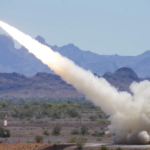
The Pentagon on Thursday released its first-ever National Defense Industrial Strategy (NDIS), detailing a range of priorities to “catalyze generational rather than incremental change” for bolstering weapons production. DoD officials told reporters the strategy, which includes steps to get after improved supply chain resiliency and enhanced cooperation opportunities with international partners, will be followed soon by an implementation plan with “near-term measurable actions and metrics to gauge progress.” “The intention of the implementation plan is to create a prioritized list…

 By
By 











